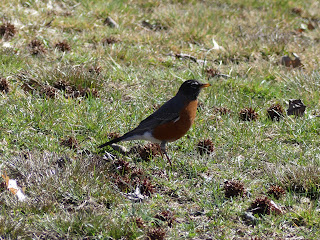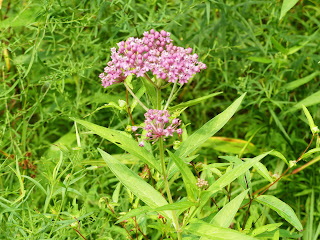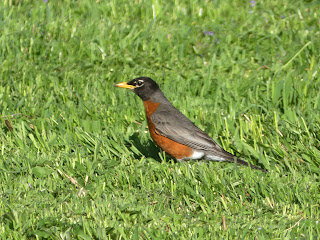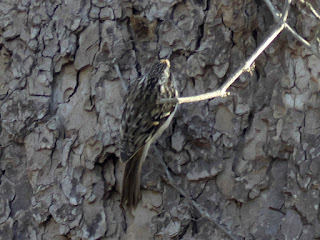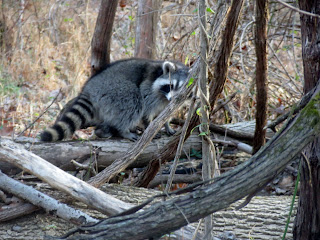Wood Duck Home
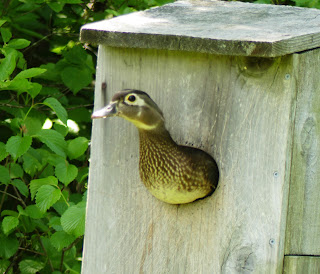
For Throwback Thursday, I met a Wood Duck mom leaving her house back in 2017, presumably to make a food run. This is the only time I knew for sure that this duck box was occupied, and I was kind of fortunate the duck decided to leave when I was in the area. This box was obviously designed for a Wood Duck to nest in. Though she could get in and out fairly efficiently, a somewhat larger bird probably wouldn't have a chance of getting in. I'm a little torn on the choice of location though. When her ducklings are ready to leave the nest, it's a fairly short drop straight into water. On the other hand, I've certainly seen Common Snapping Turtles in this part of Great Swamp, and although I'm not sure duckling is their favorite food, snapping turtles will prey on waterfowl. And small, immature waterfowl probably makes their hunt especially easy. June 11, 2017 at Great Swamp National Wildlife Refuge Photo 8555584, (c) jpviolette, some rights reserved (CC BY-NC)


